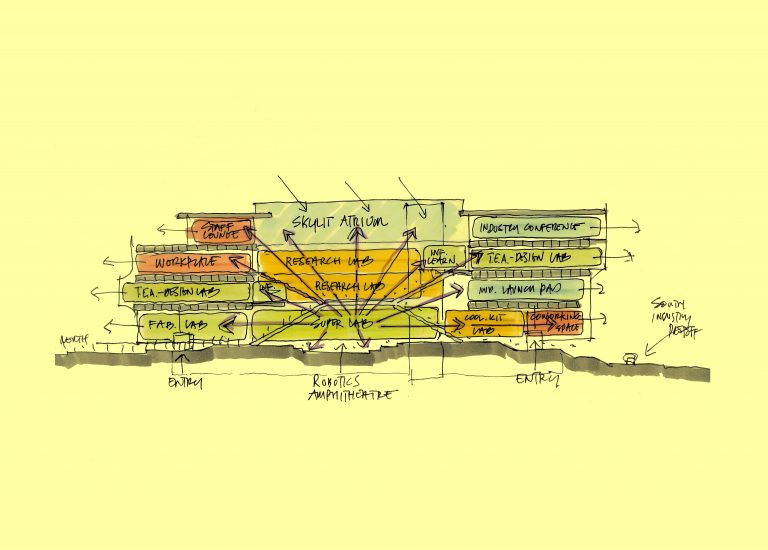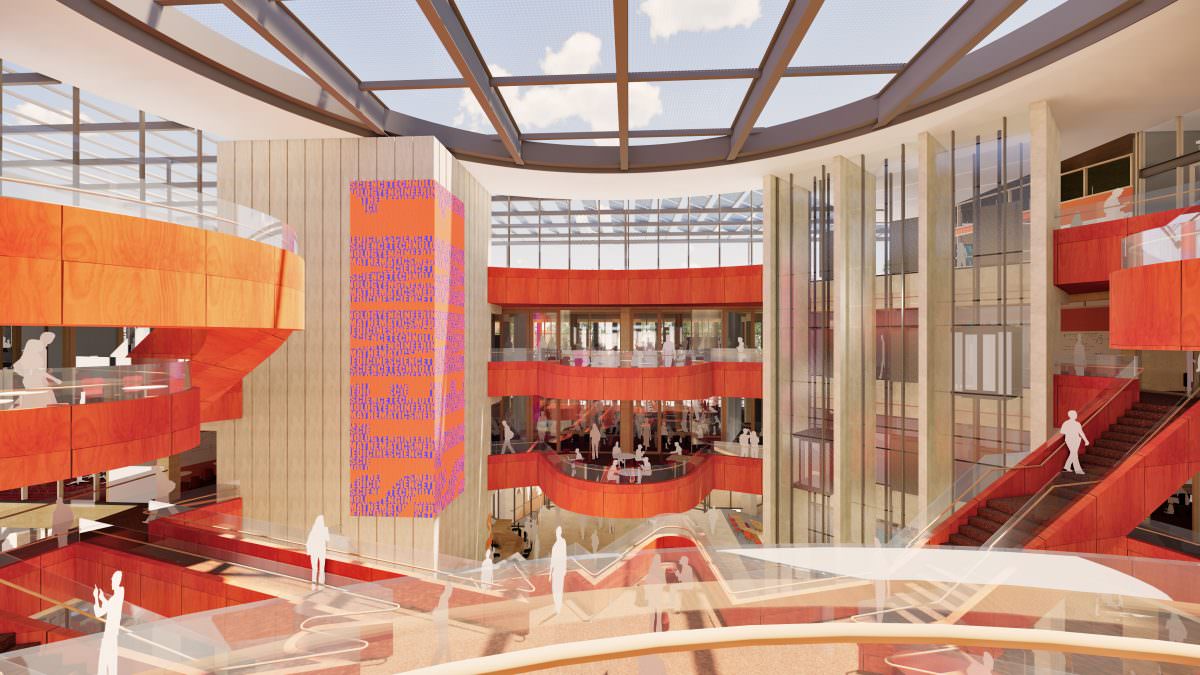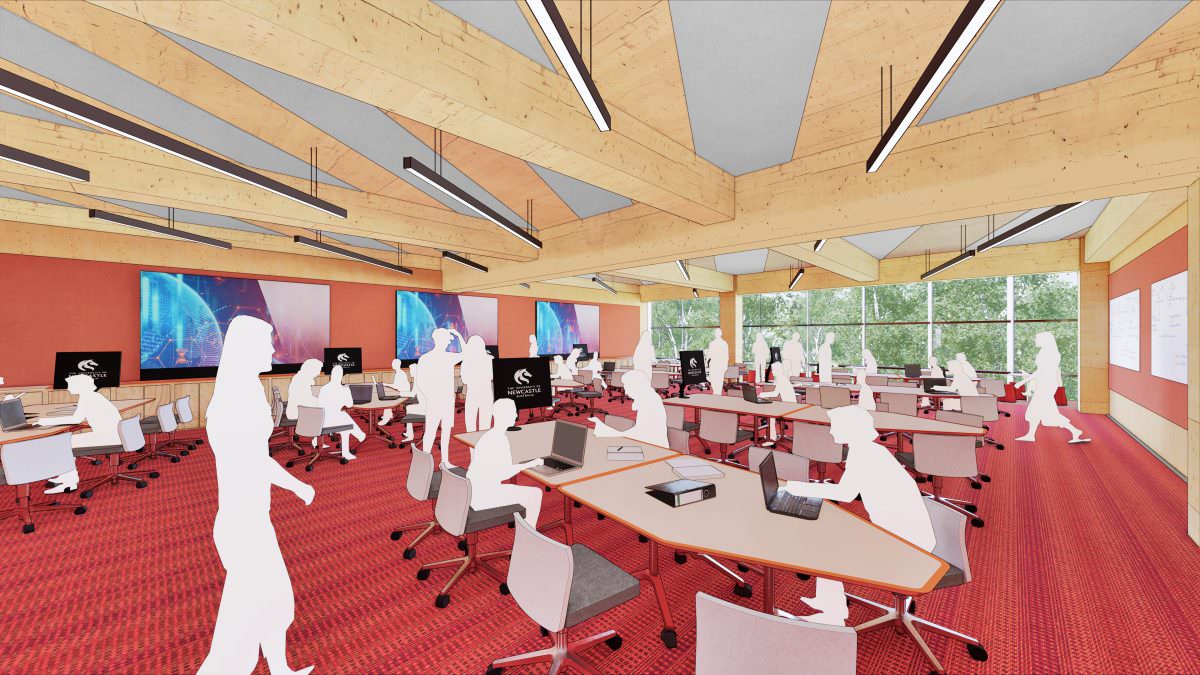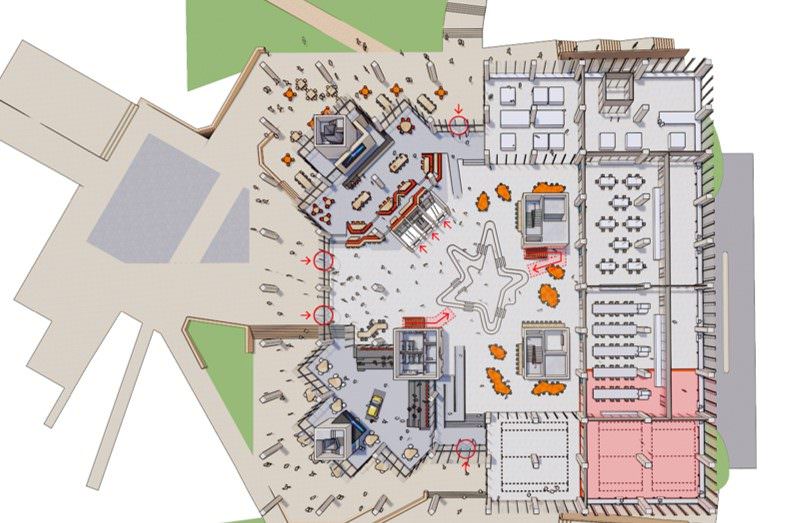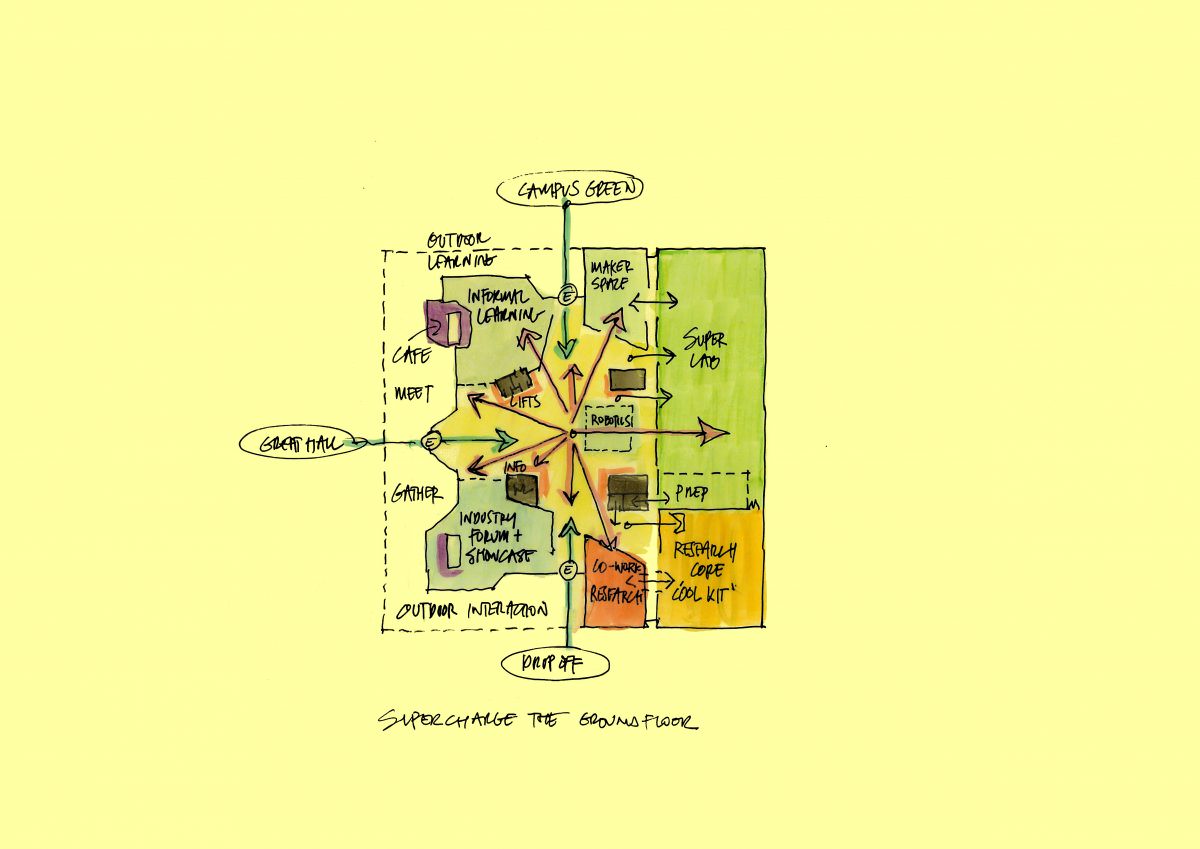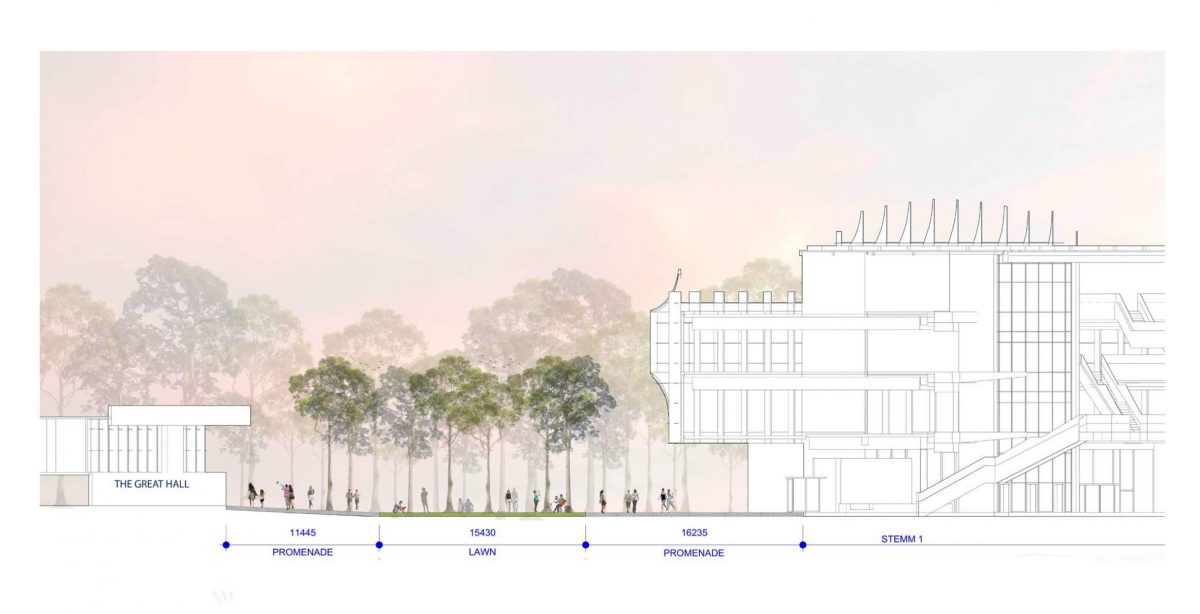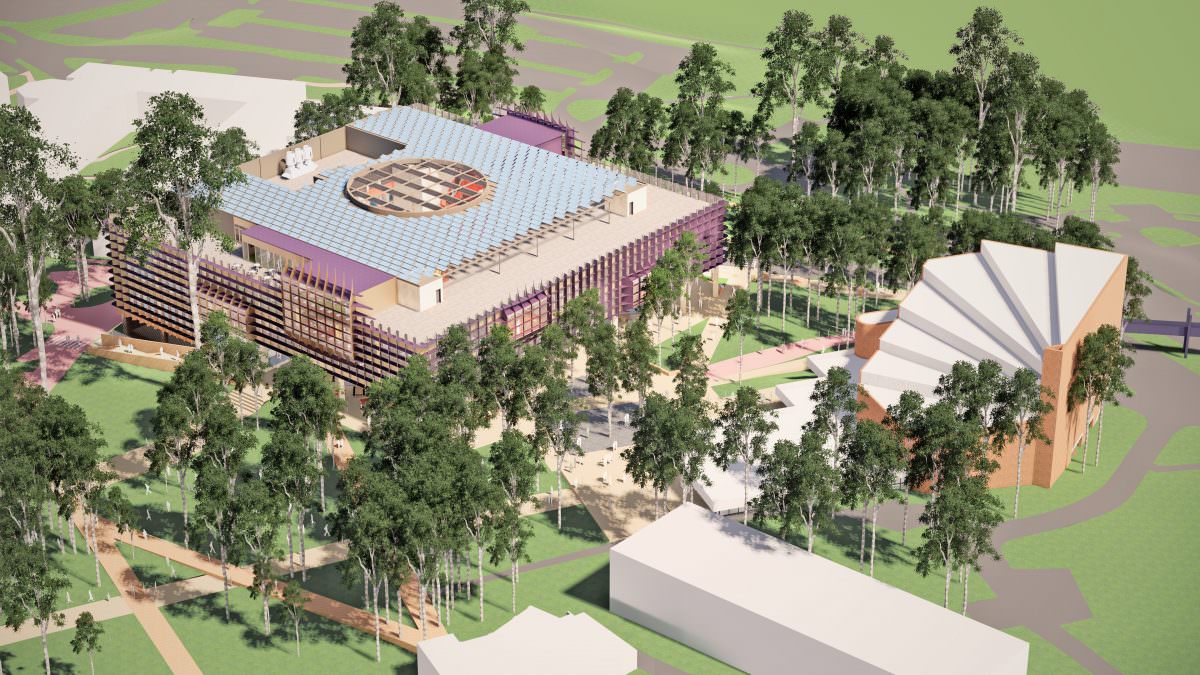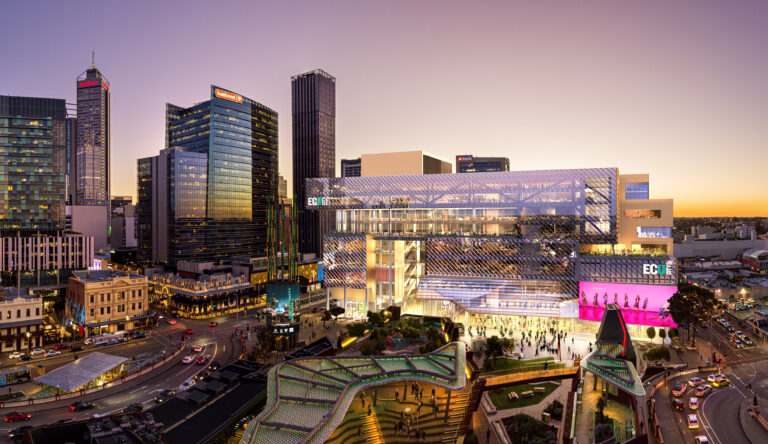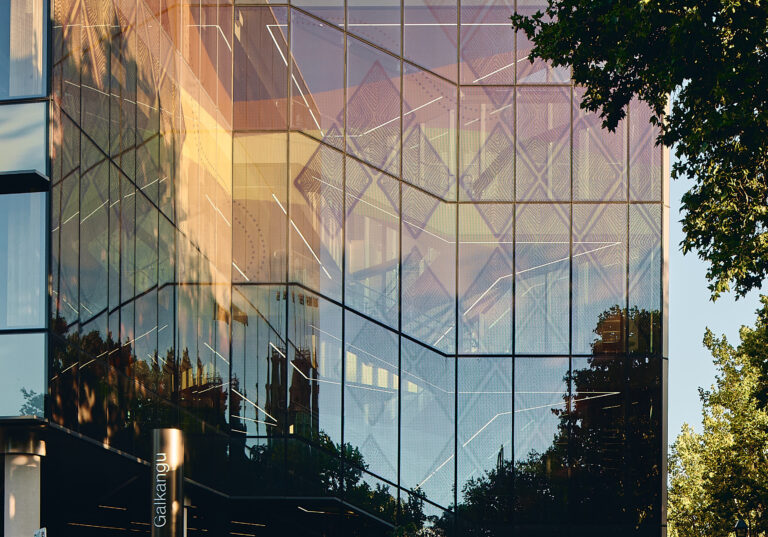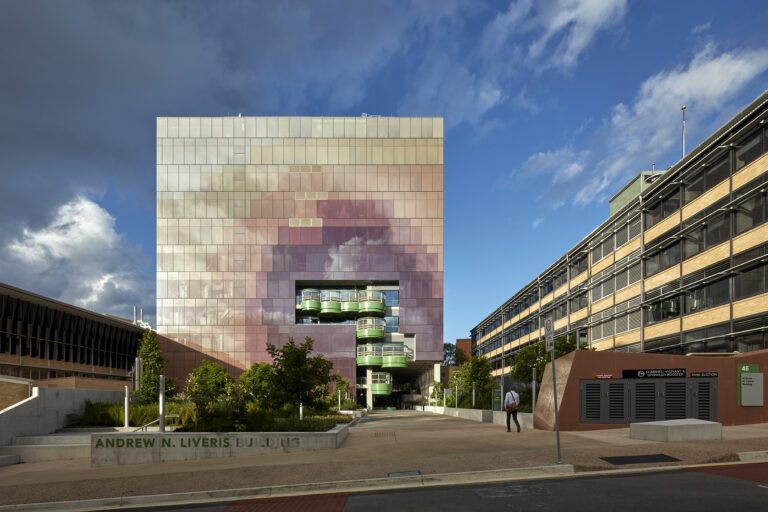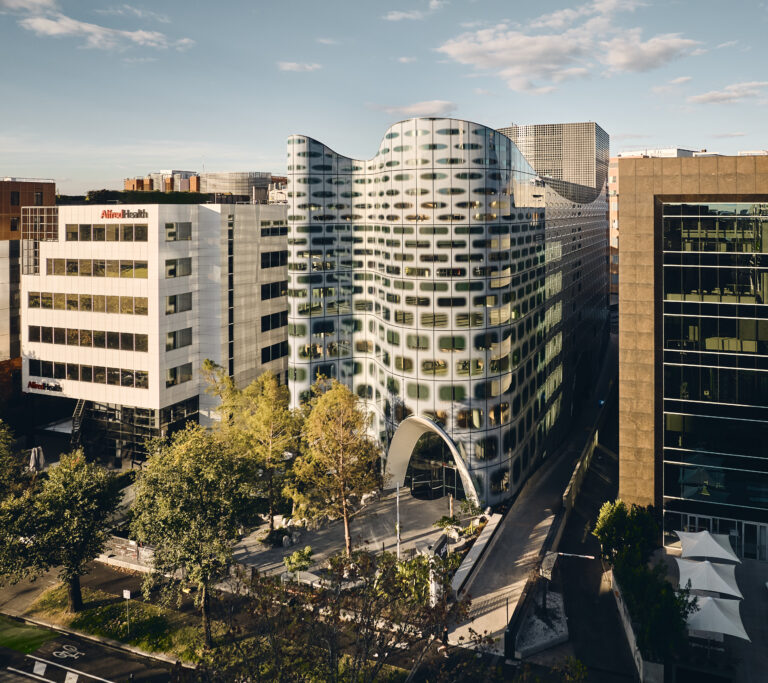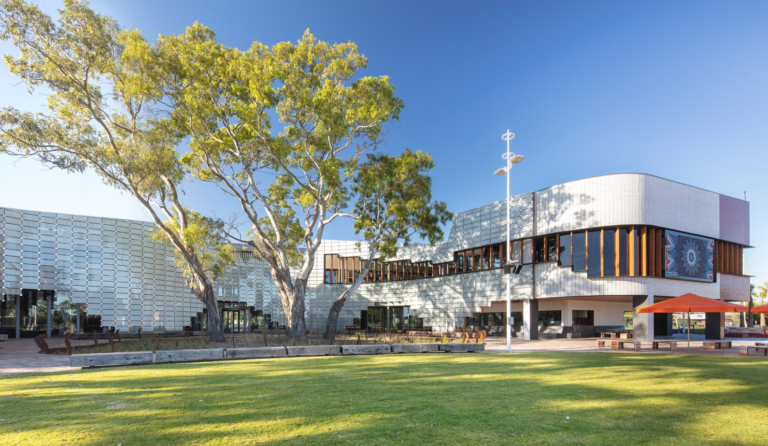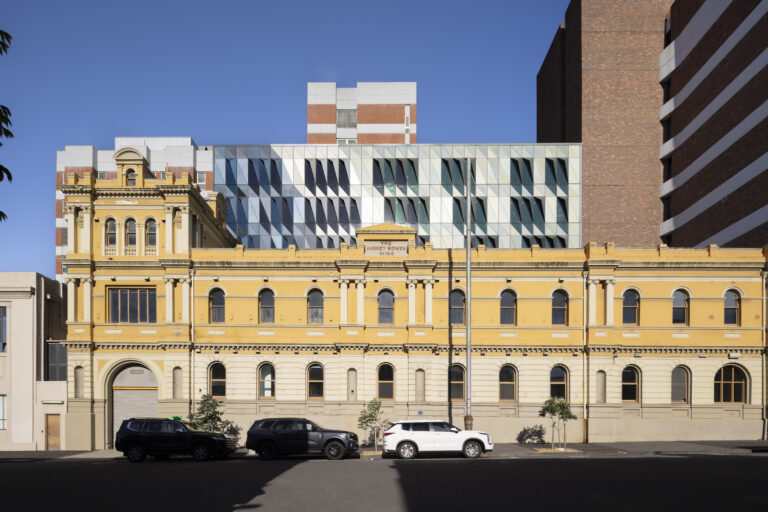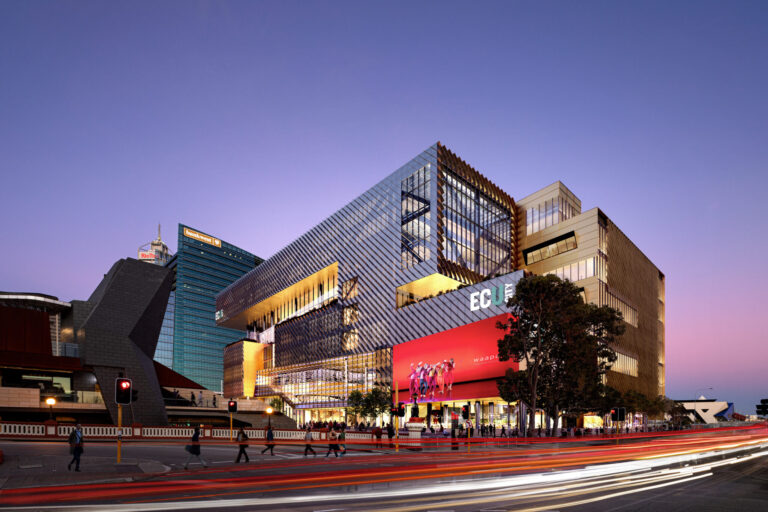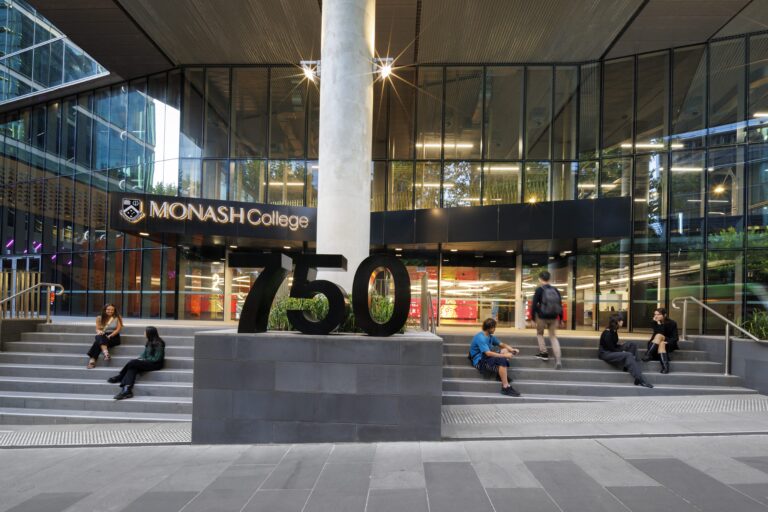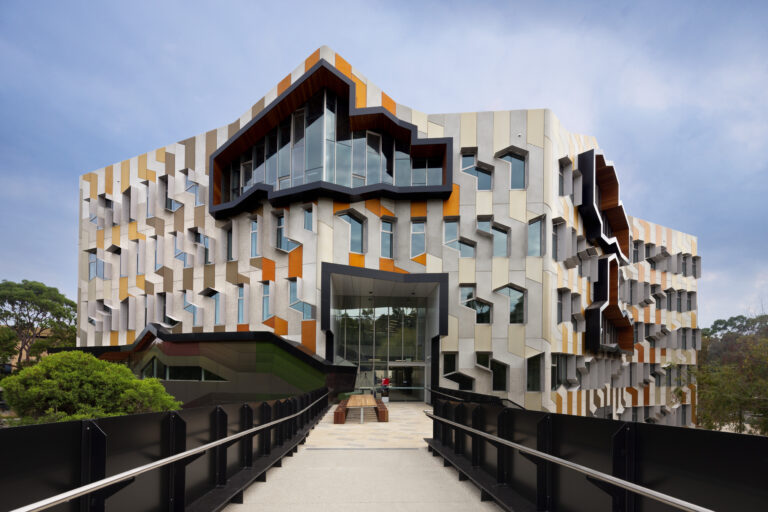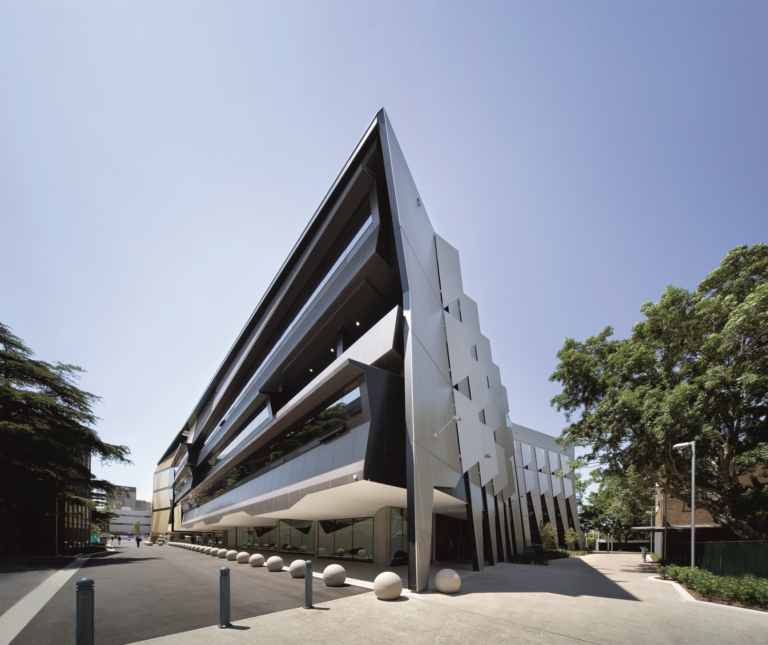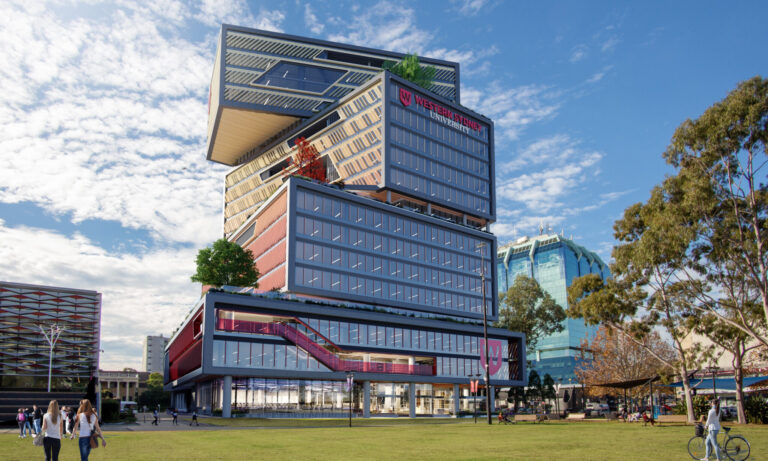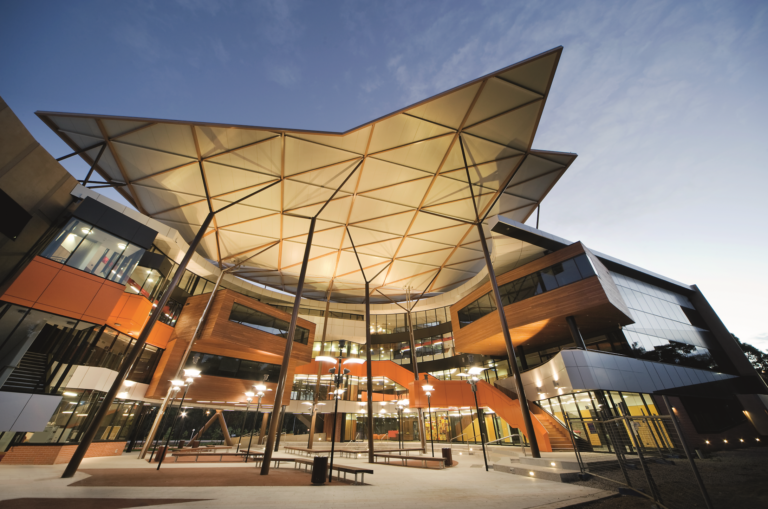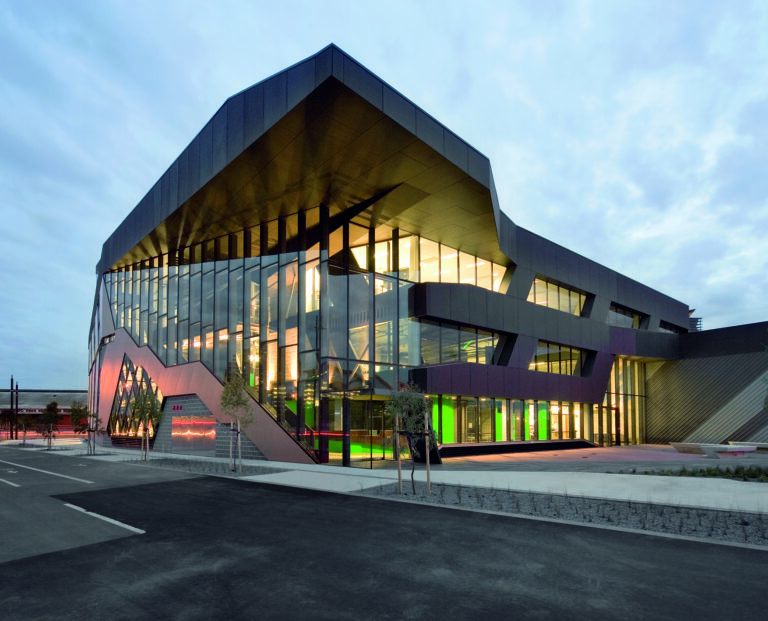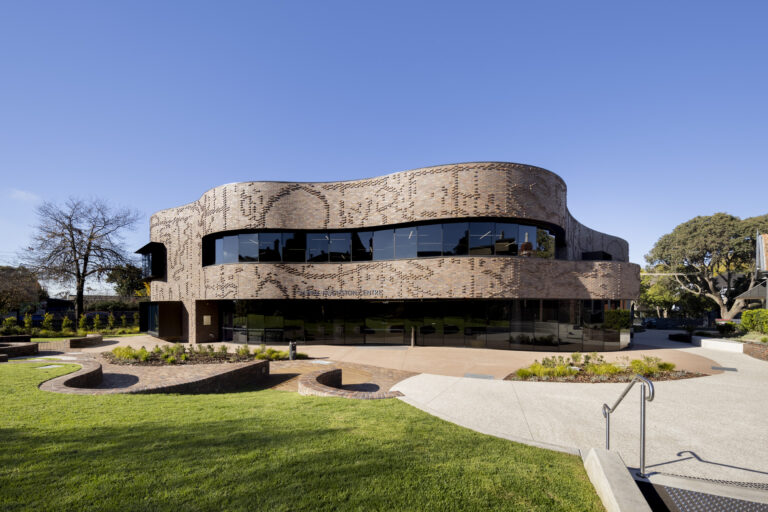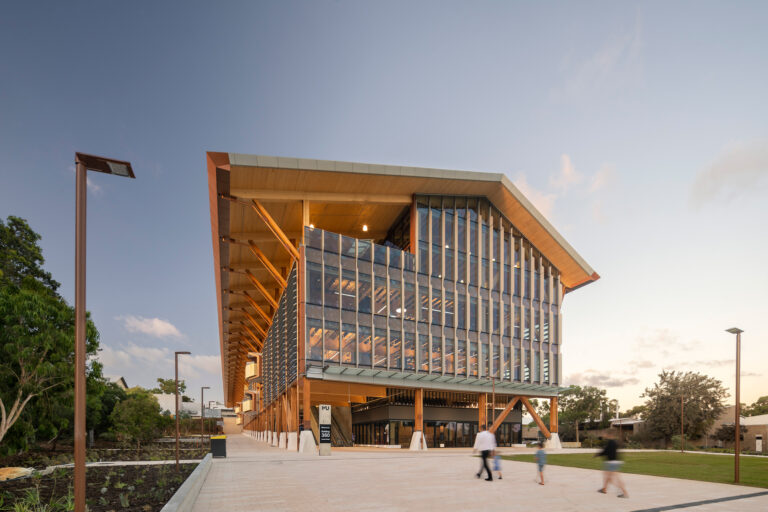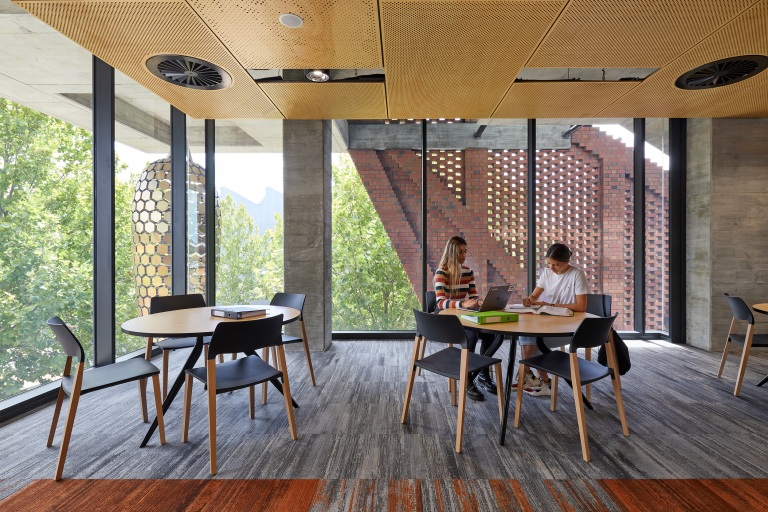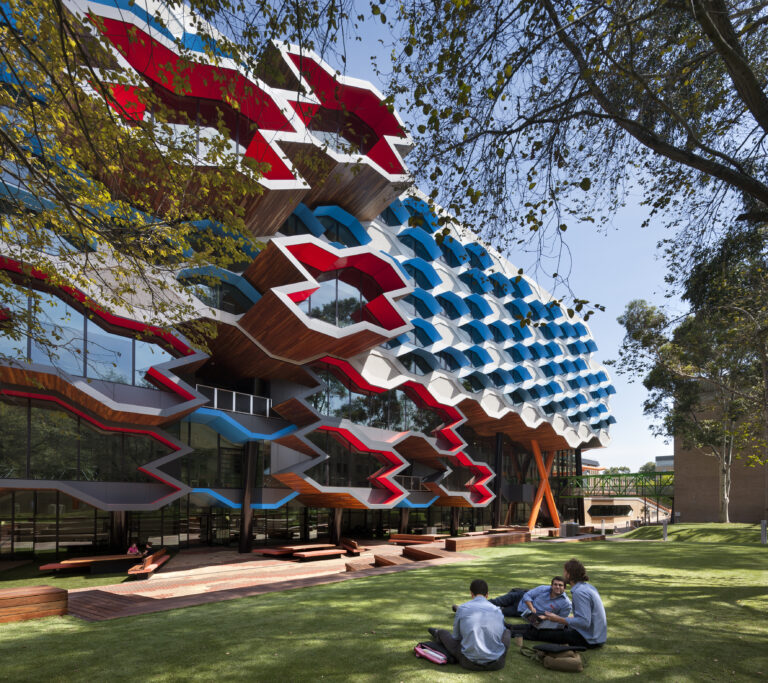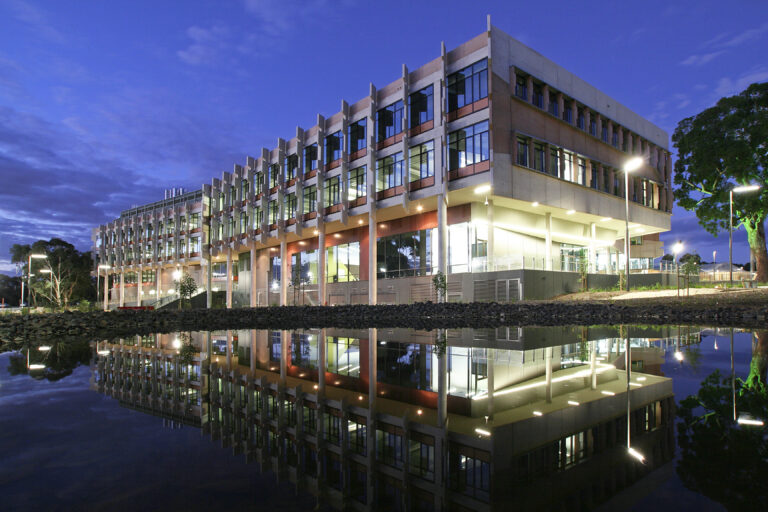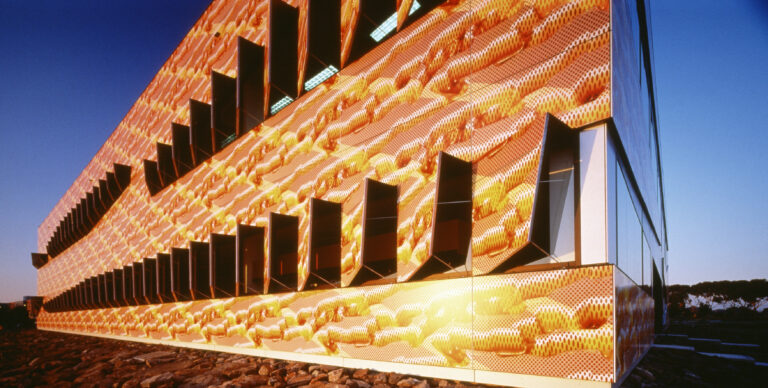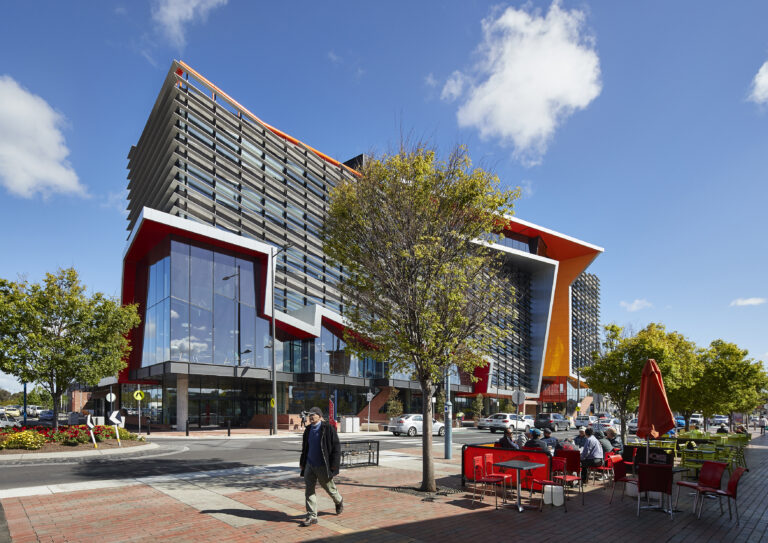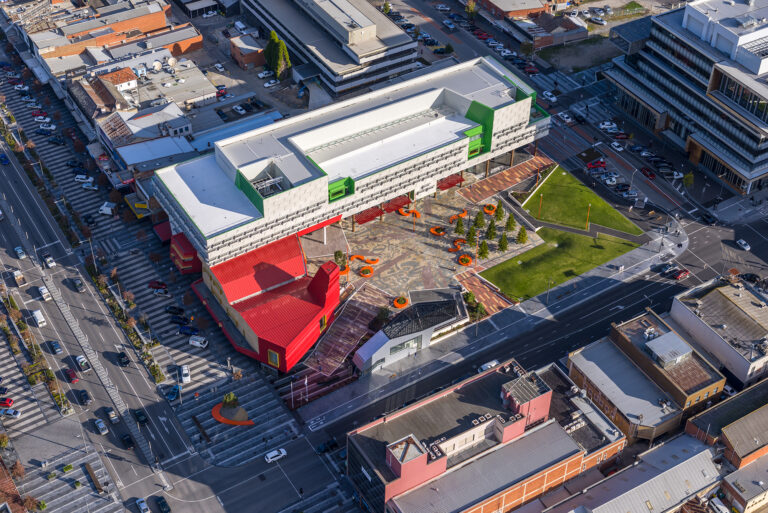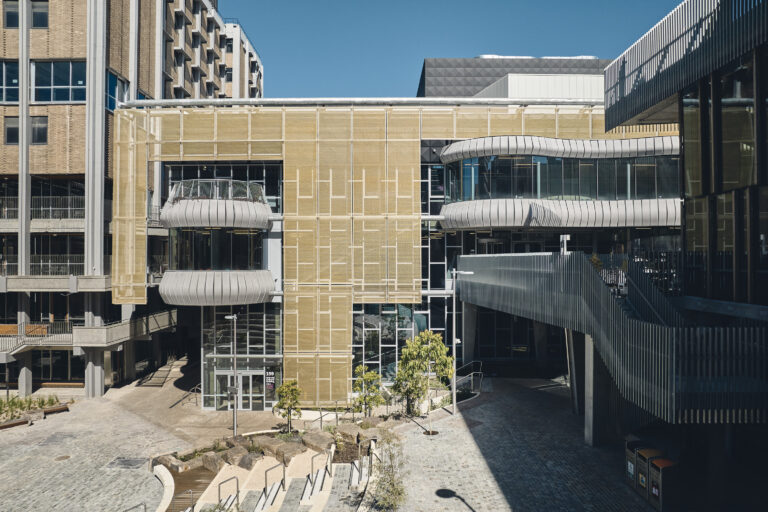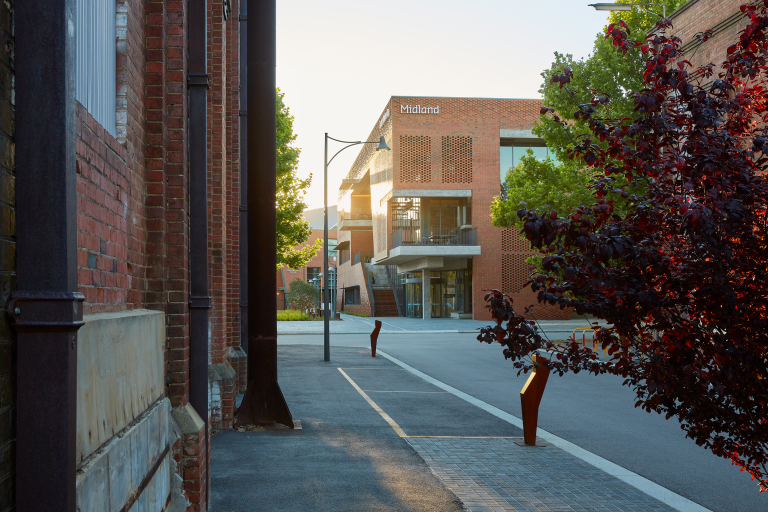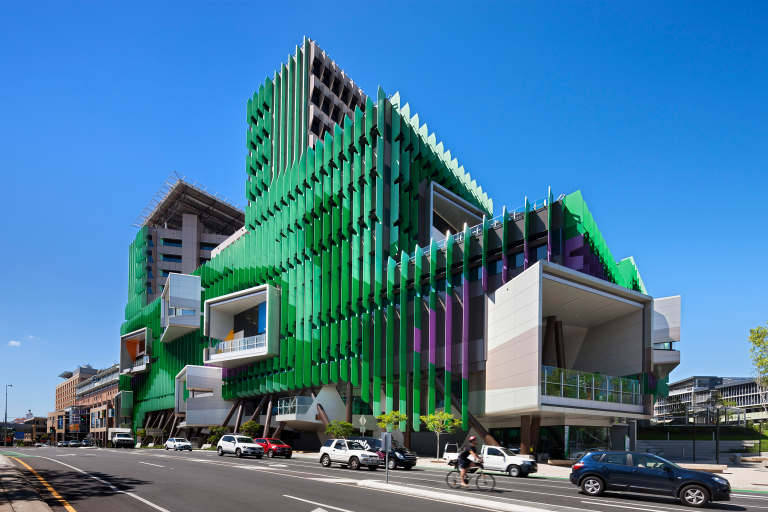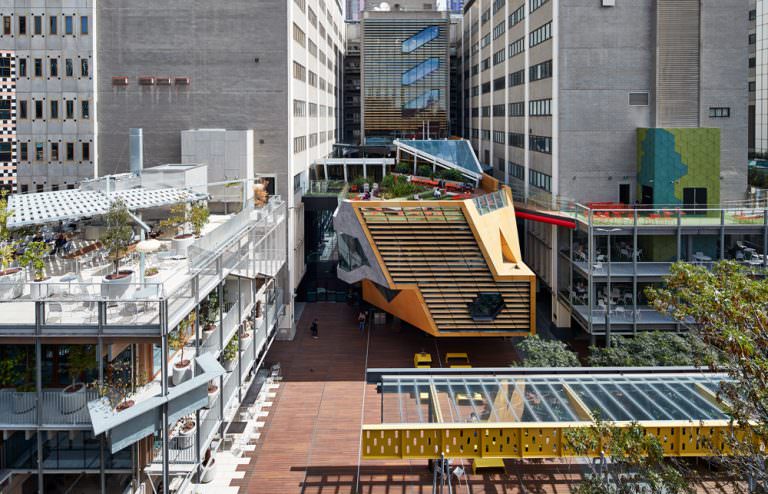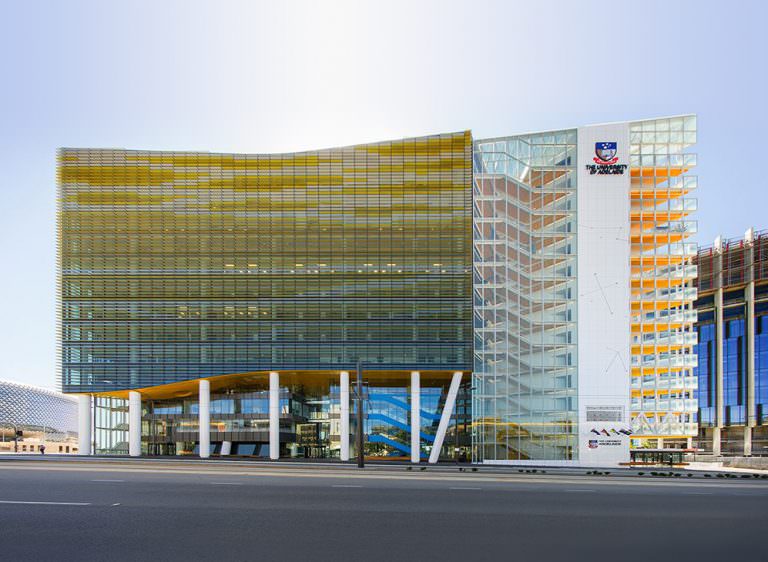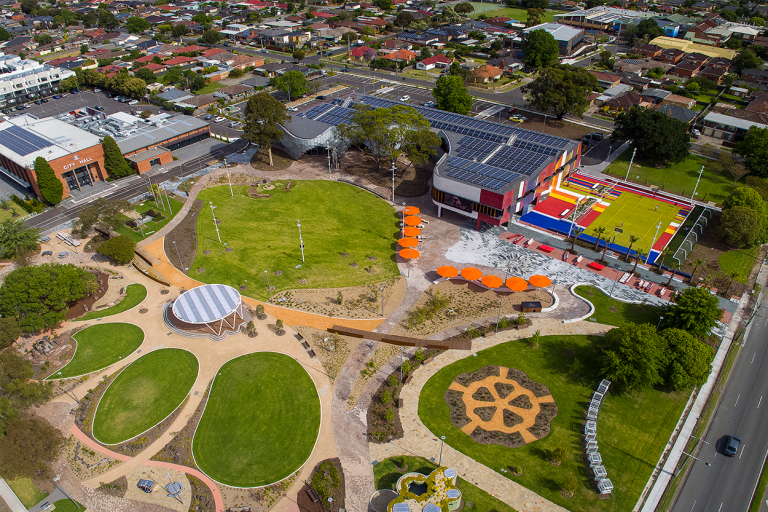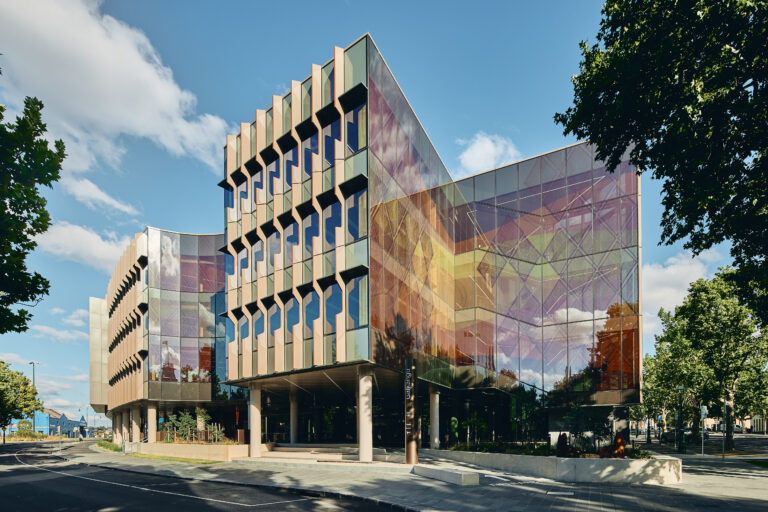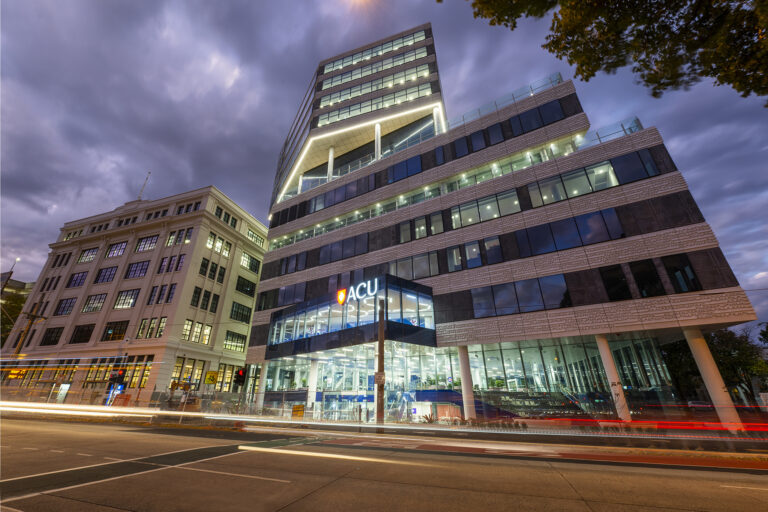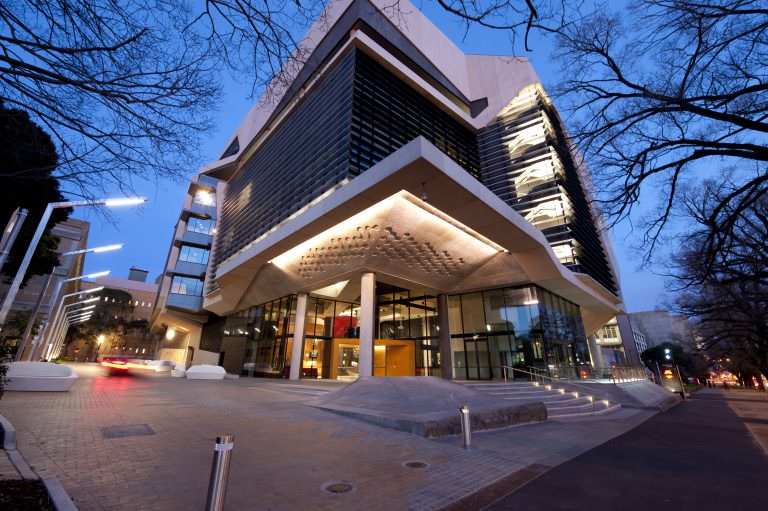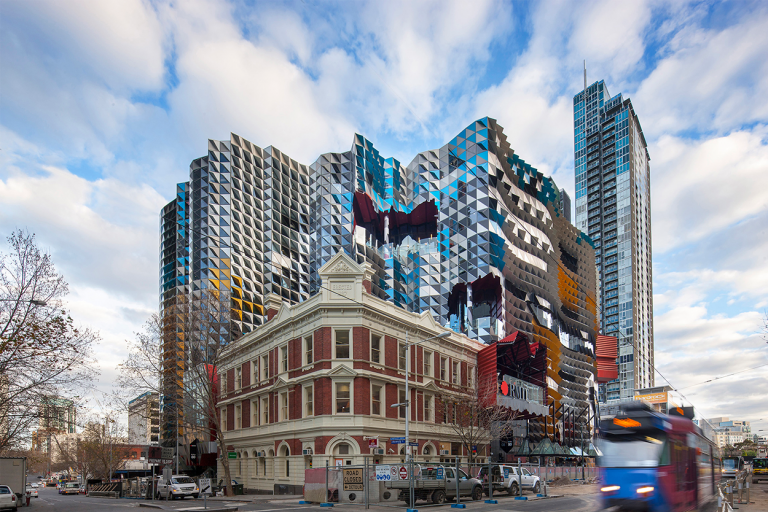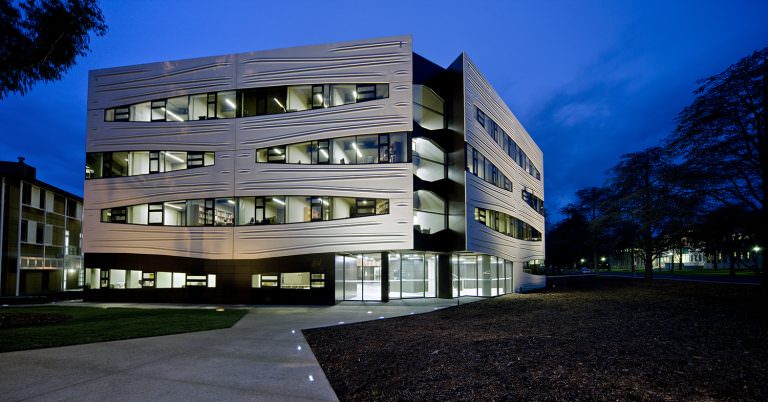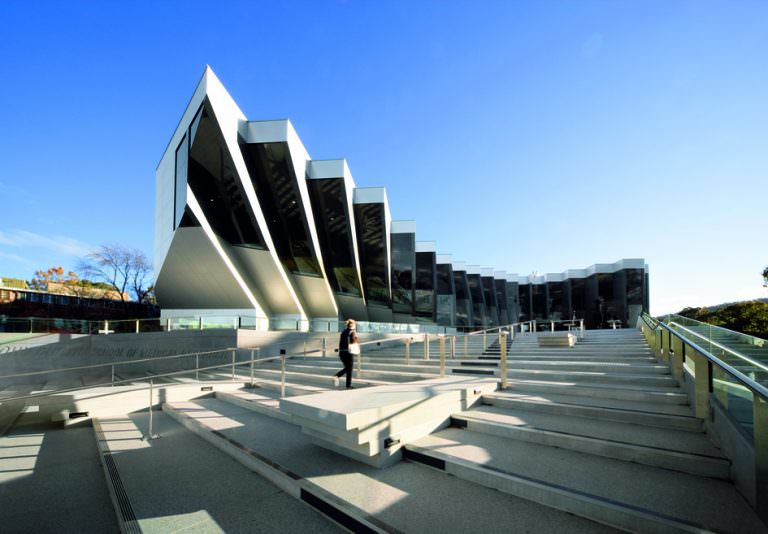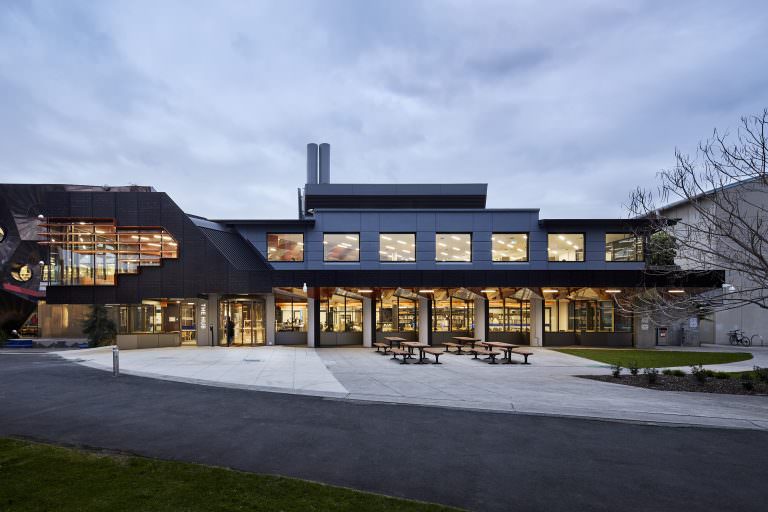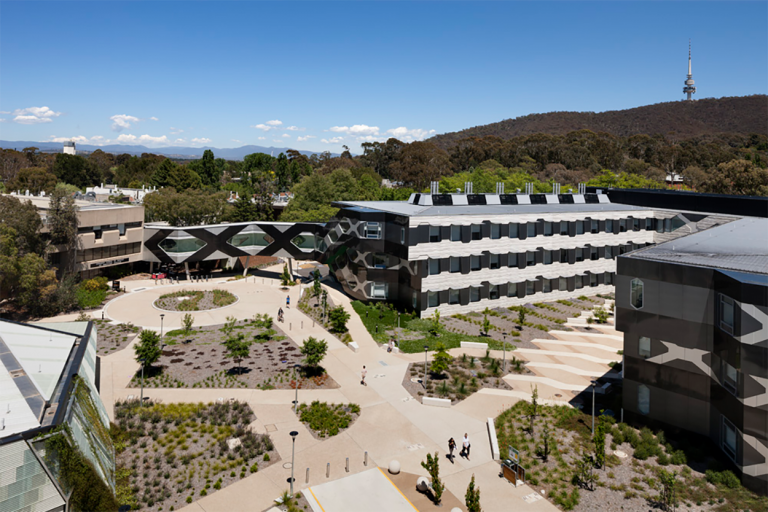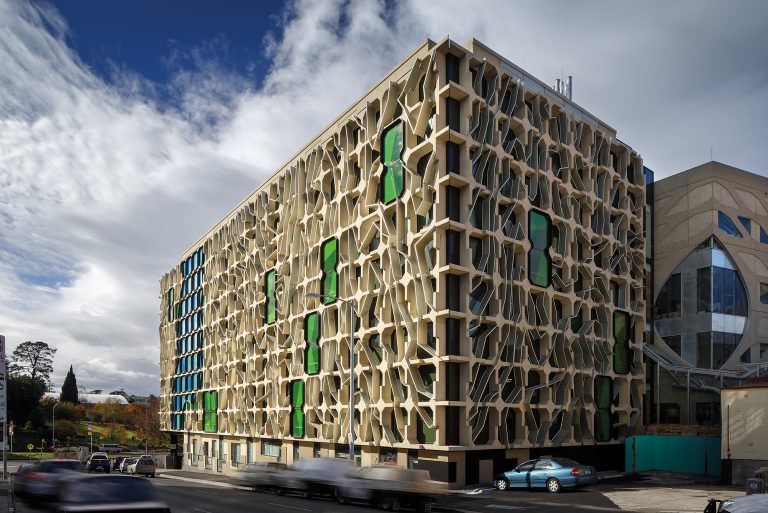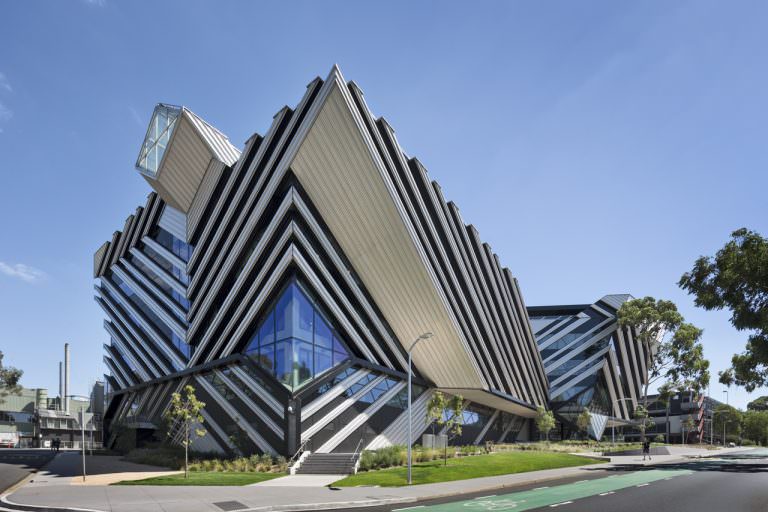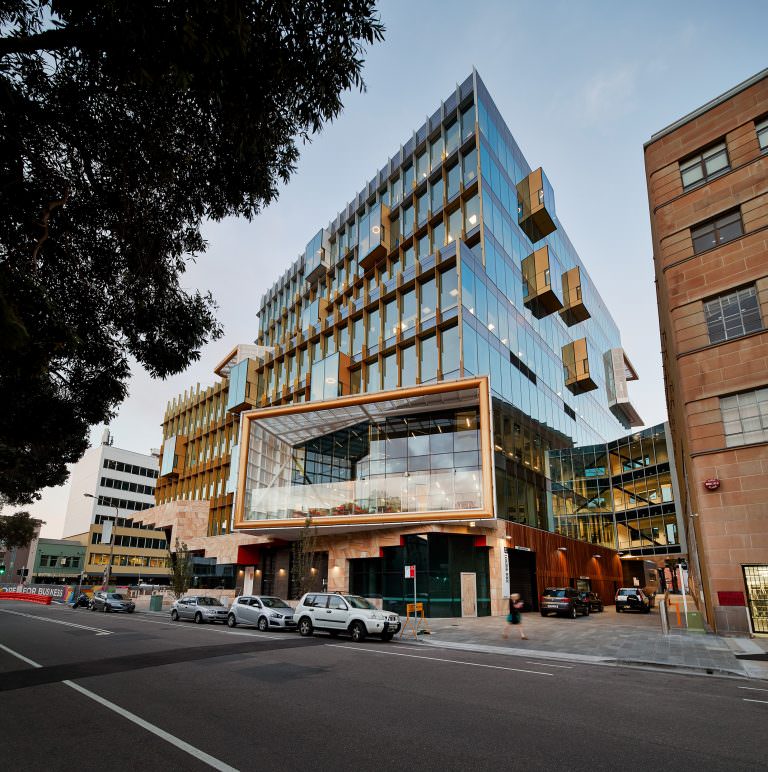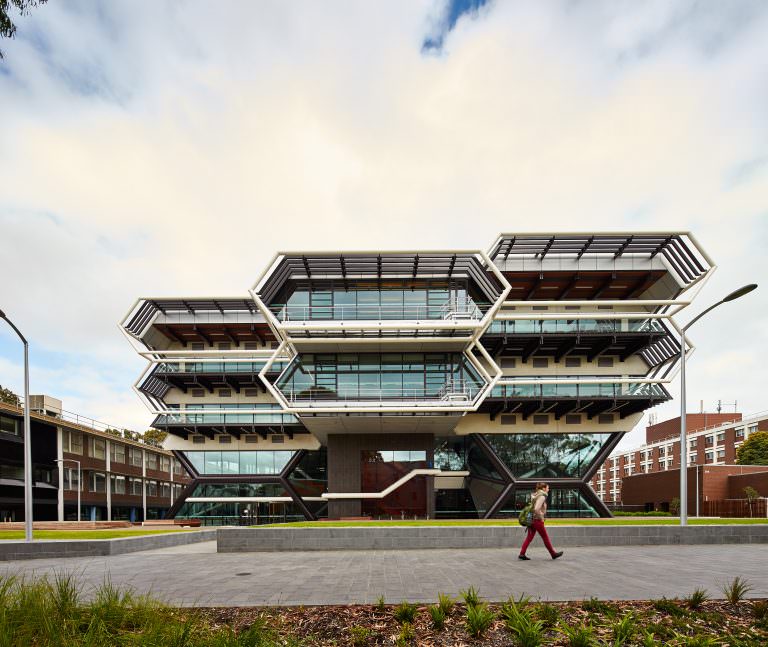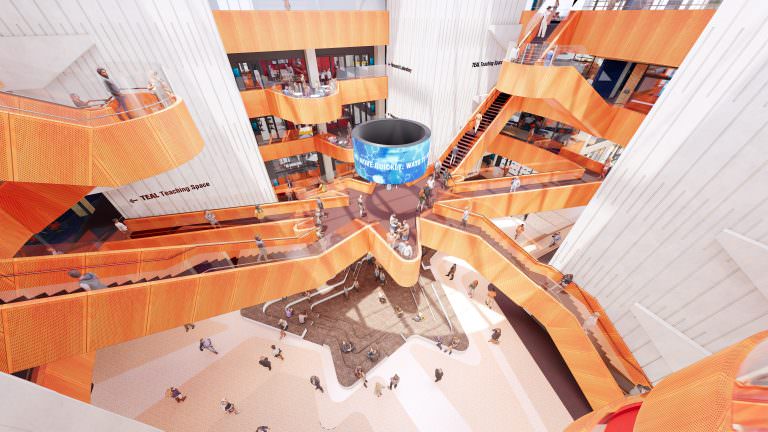Designing a new flagship campus
Tasked with designing what will be the University of Newcastle’s flagship teaching and research facility at Callaghan Campus, our work signifies a progression for the university, both physically and conceptually. The STEMM building represents a future centred on connectivity and engagement. We designed the building to foster positive wellbeing and establish a new sense of place for students, teachers, researchers and industry professionals. The ground level is deliberately ‘supercharged’—a gathering forum, showcase and maker spaces wrapped by a café to anchor the precinct through the day. It creates a central campus community design element for the precinct.
From the ground floor up, the STEMM building welcomes students and researchers in and facilitates collaboration. Our design maximises natural light through the building’s grilled façade, glass atrium and clear ground floor glazing to the colonnade. Encouraged by high visibility from the outside, the ground floor design encompasses spaces for interactions. These fronts open to lawns and paths so everyday circulation between Great Hall and campus green flows through the forum. Daylight and views contribute to broader campus sustainability goals. These spaces include a central gathering forum, core technology platform, flexible teaching lab, fabrication lab, informal student spaces, showcase space and the café/kitchen. With environments colliding to activate a vibrant precinct, the ground floor brings life to the campus, giving students a strong sense of place. The mix supports learning environment design for varied cohorts.
The site’s location creates a bold new formal entry or gateway into the Callaghan Campus from the existing south-west entry and Ring Road. Atop the hill adjacent to the Great Hall, and on axis with the main formal approach to the University, the site provides a great opportunity for STEMM to become a social experience and cultural focus. It will become a new beacon of engagement and social value for students, staff, visitors, industry partners and the community. Set on this axis, STEMM reads as a campus gateway and aligns daily movement from public transport to the building’s heart. Its position reinforces campus development along key pedestrian routes. The site’s proximity to the Great Hall holds significance to the university. Built in 1973, the Great Hall has been a focal point, both for wayfinding and for ceremonies and presentations. Students will also benefit from the STEMM building’s proximity to multiple public transport links close to the south entrance, making student’s commute more accessible and affordable. This improves access to student engagement spaces across campus.


